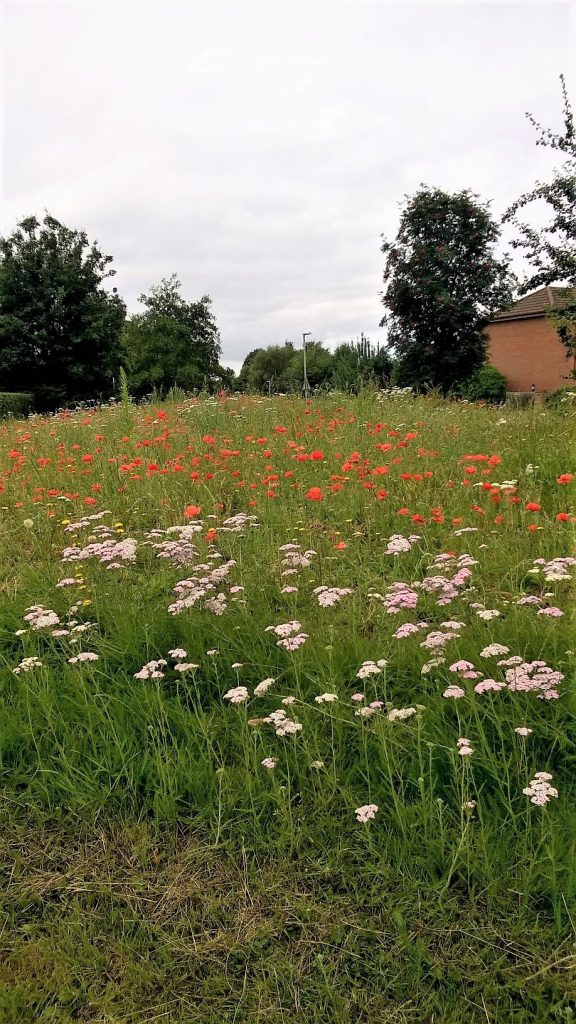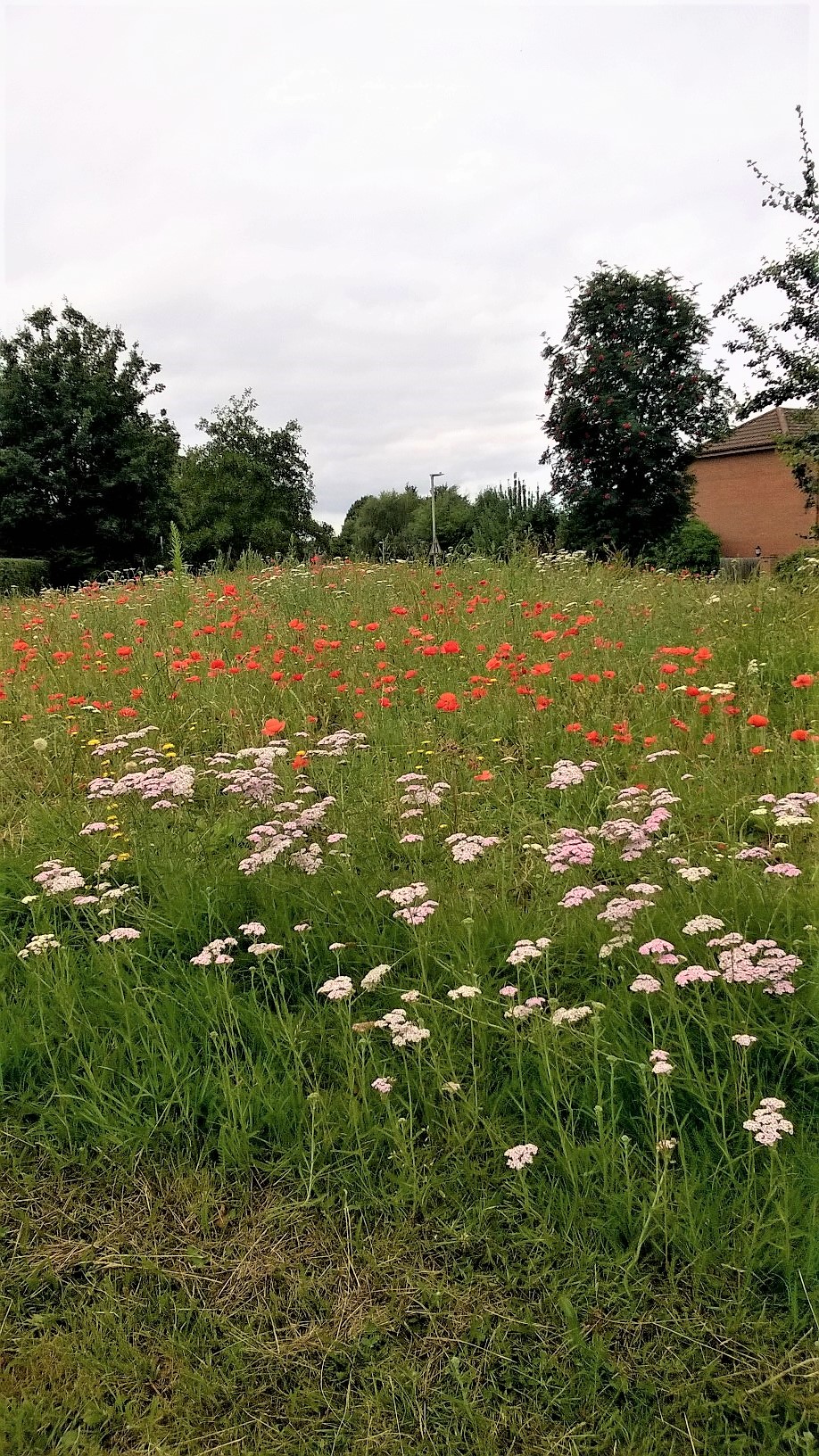Bees, butterflies and other pollinating insects will be given an easy path through Wokingham borough thanks to a growing network of wildflower planting areas across the borough.
Wokingham Borough Council is supporting charity Buglife with its Berkshire B-lines map, which is being backed with funding from the Department for Environment, Food and Rural Affairs. The map highlights pre-existing wildflower areas and possible areas for targeted wildflower habitat creation.
B-lines are existing and potential wildflower habitats which link towns to the countryside across the country. By providing these it is easier for insects to move across the area safely.
The council is already working to create new wildflower meadows across the borough, with more than 16,500 sqm, the equivalent of more than two football pitches, planted in 2019, at locations including Kitwood Drive, Lower Earley; Hurricane Way, Woodley; and Woosehill Spine Road, Woosehill.
The B-lines already cover many areas where the council is working to maintain longer grass and meadow areas including Ashenbury Park in Woodley, Winnersh Meadows and Riverside Park in Earley.
Country parks and green spaces are also part of the network, with areas including Dinton Pastures and California Country Park having areas with specialised management to encourage pollinators and attract insects in specific areas.
“Pollinating insects are the lifeblood of our environment so anything we can do to support them as part of this project is fantastic,” said Cllr Parry Batth, executive member for environment. “We’re already carrying out work to maximise the opportunities for wildflowers across the borough and it’s great we can link these up to be part of Buglife’s plans for the whole country. We look forward to working with them to support their vital work, which is being supported by Government funding.”
The B-lines project aims to connect the county’s best remaining wildlife sites through targeted wildflower habitat creation. Bees and other pollinators are disappearing from the UK’s countryside because of a lack of wildflower-rich habitats.
Creating pollinator habitat along B-Lines will help wildlife move across our countryside, saving threatened species and making sure that there are plenty of pollinators out there to help us grow crops and pollinate wildflowers.
Catherine Jones, pollinator officer from Buglife, said: “B-Lines provide an exciting opportunity for everyone to support our struggling insect pollinators. By working together to create a network of wildflower-rich habitats, we can support healthy populations of bees and other pollinators enabling them respond to threats such as climate change.”
Sam Cartwright, senior biodiversity and planning officer from Berkshire, Buckinghamshire and Oxfordshire Wildlife Trust, said: “Insect abundance has plummeted in recent years and a step-change is needed in how we target our collective efforts to restore their numbers.
“This network of B-Lines will help to prioritise local action for pollinating insects in the places where it will be most beneficial. Crucially, these B-Lines will also contribute to Berkshire’s wider nature recovery network.”
A full list of areas we maintain with wildflowers and meadows, which are part of the network, are listed below:
· Ashenbury Park
· Winnersh Meadows
· Riverside Park
· Spencers Wood Cemetery
· Charvil Meadows and Charvil Country Park
· Dinton Pastures Country Park and Lavells Lake
· Winnersh Marsh
· Sindlesham Meadows
· The Grove
· Hazebrouck Nature Park
· Rooks Nest Wood
· California Country Park
· Warren Wood
· The Moors
· Heathlake.



